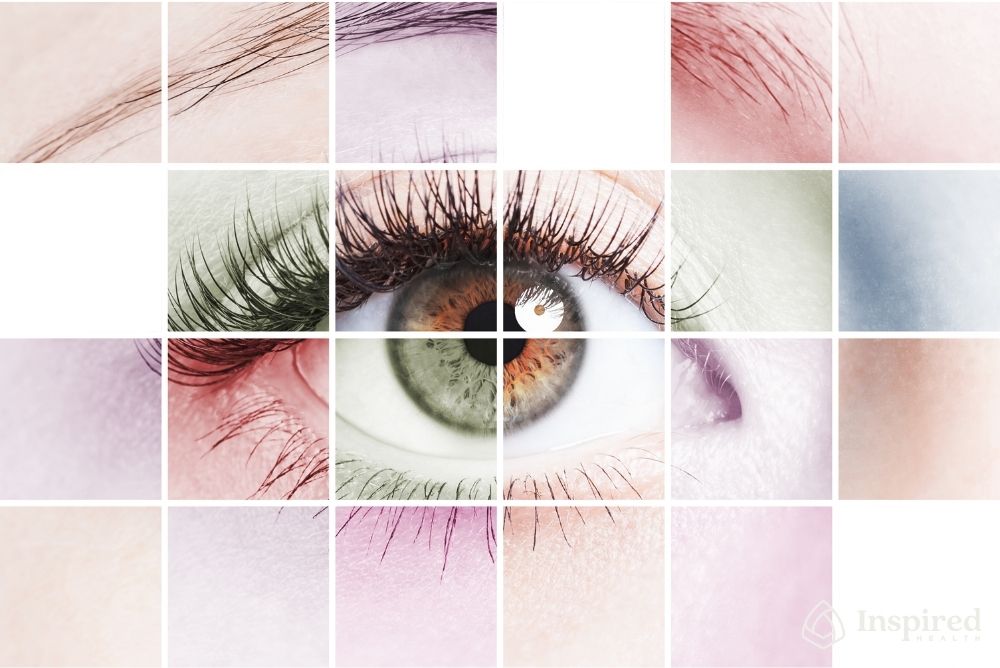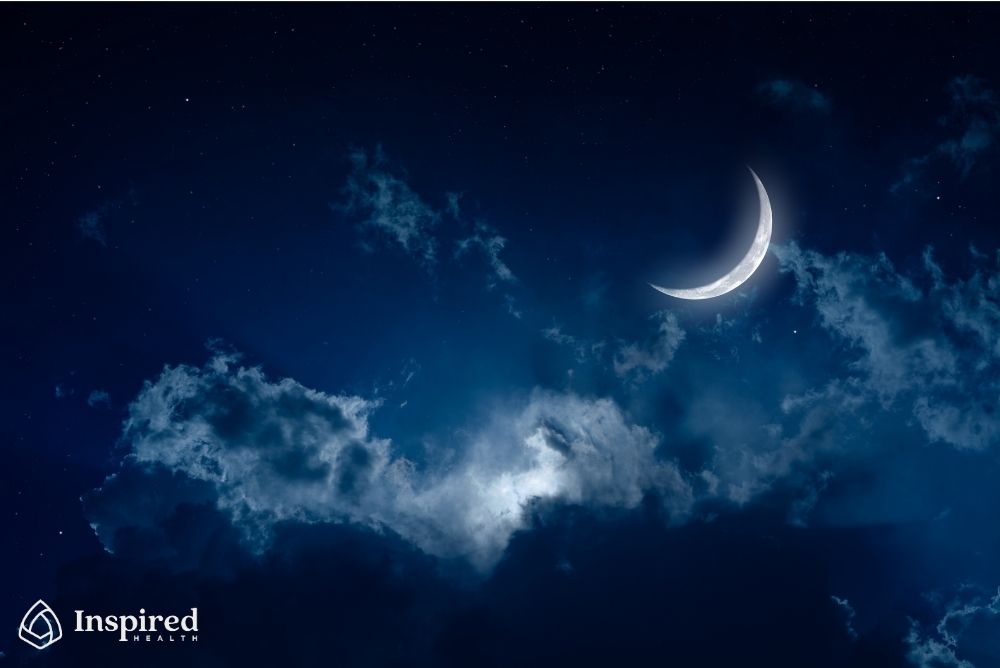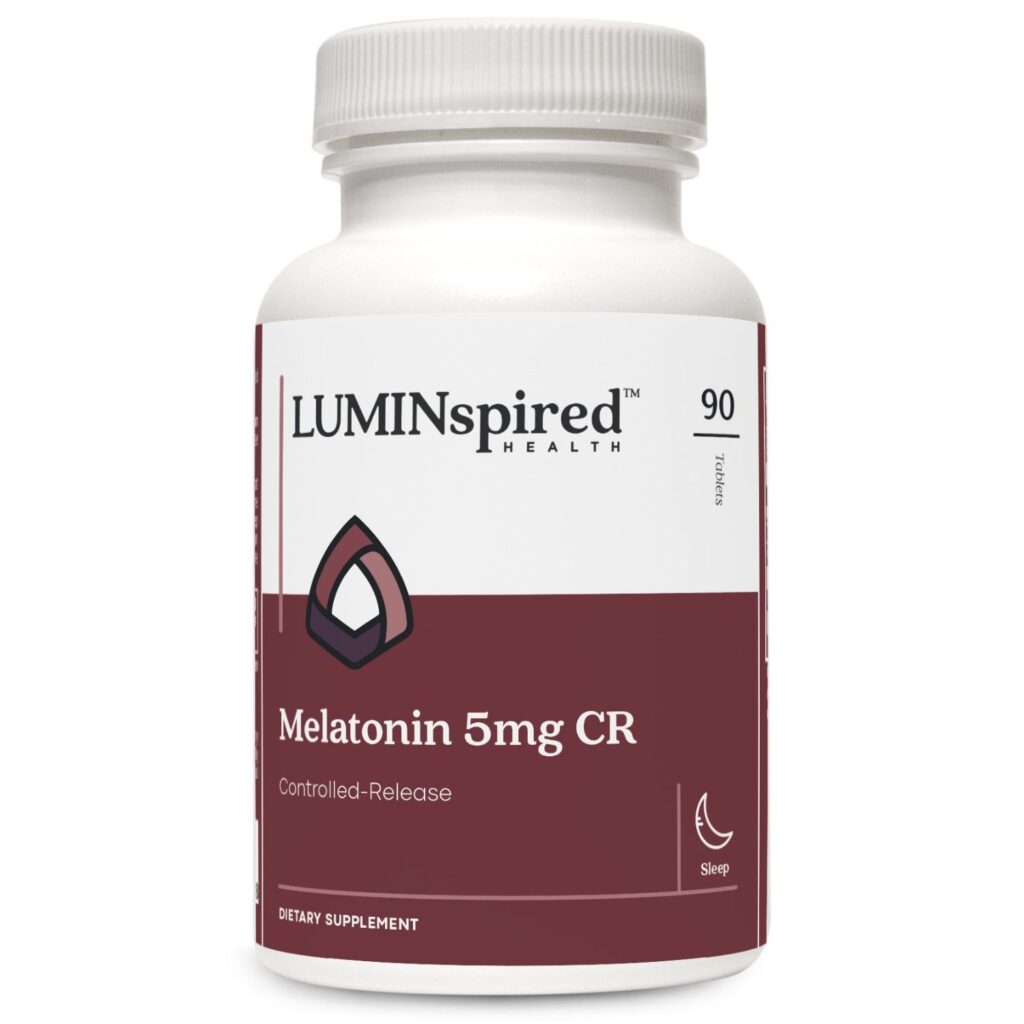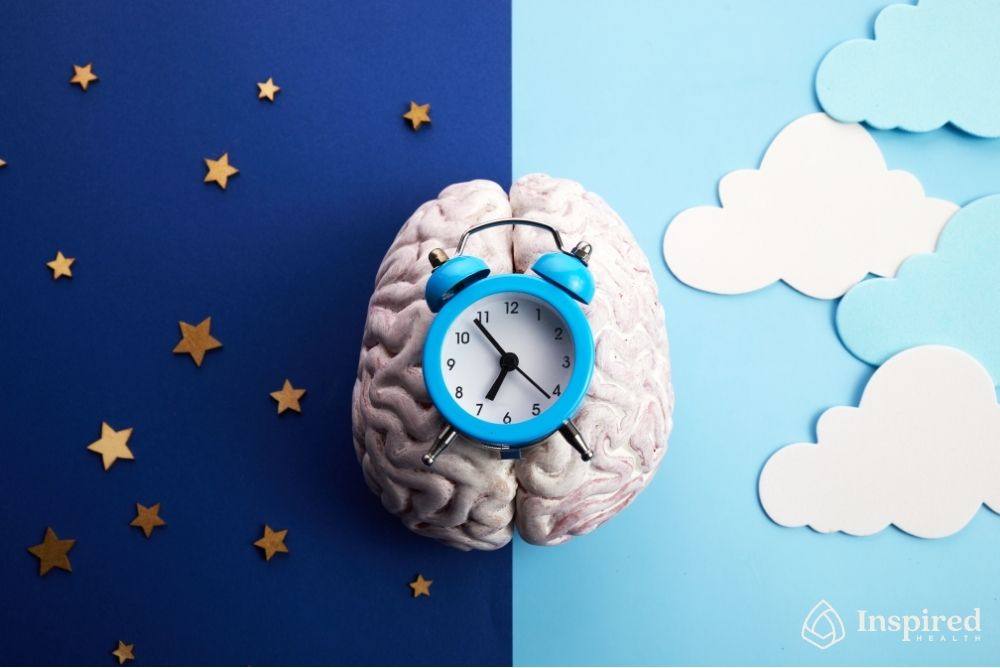Have you ever wondered why you start to feel sleepy after sunset or why waking up feels easier when the sun shines through your window? Behind these natural rhythms is a tiny, pinecone-shaped part of your brain: the pineal gland. Though small, it plays a mighty role in regulating your circadian rhythm, your body’s internal 24-hour clock.
Let’s explore how the pineal gland works, how it helps regulate sleep, and what you can do to support it for better rest, energy, and overall well-being.
What Is the Pineal Gland?
The pineal gland is a small endocrine gland located deep in the center of the brain, between the two hemispheres, near a structure called the thalamus. It’s part of the epithalamus and is best known as the body’s primary source of melatonin, the hormone that regulates sleep and wake cycles.
Historically called the “third eye” in ancient cultures and philosophies, the pineal gland has long been associated with light, awareness, and circadian regulation.
What Is the Circadian Rhythm?
Your circadian rhythm is your body’s natural 24-hour cycle that governs processes like:
- Sleep and wakefulness
- Hormone production
- Body temperature
- Digestion
- Mood and mental alertness
This rhythm is closely tied to light and darkness in your environment, and the pineal gland is the bridge between external light cues and your internal hormonal response.

How the Pineal Gland Regulates the Circadian Rhythm
The pineal gland regulates your circadian rhythm by producing and releasing melatonin, and this process is directly influenced by light.
Here’s how it works:
1. Light Perception Begins in the Eyes
Your eyes contain special cells (called ipRGCs or intrinsically photosensitive retinal ganglion cells) that detect light, especially blue light from the sun.
2. Signals Travel to the Brain’s Master Clock
These light signals are sent to the suprachiasmatic nucleus (SCN) in the hypothalamus. The SCN is your body’s master circadian clock.
3. SCN Controls the Pineal Gland
The SCN sends messages to the pineal gland based on how much light is detected.
- In darkness (especially after sunset), the SCN signals the pineal gland to start producing melatonin.
- In bright light (especially morning sunlight), melatonin production is suppressed, signaling that it’s time to wake up and be alert.

4. Melatonin Promotes Sleep
Melatonin then circulates through the bloodstream and cerebrospinal fluid, lowering alertness and preparing your body for sleep.
Melatonin: The Messenger of Darkness
Melatonin is often called the “hormone of darkness” because its production depends on darkness, and it helps synchronize your body to the natural day-night cycle.
Key facts about melatonin:
- Levels rise in the evening (around 8–9 p.m.), peak at night (between 2–4 a.m.), and fall in the early morning.
- Artificial light, especially from screens or LED lighting, can block melatonin release.
- Melatonin doesn’t “knock you out,” but it signals to your body that it’s time to wind down.
How to Support a Healthy Pineal Gland and Circadian Rhythm
If your sleep is off, your energy is inconsistent, or you have trouble waking up or falling asleep, your pineal gland–circadian system might be disrupted. The good news? You can support this system naturally with a few simple lifestyle changes.
1. Get Natural Morning Light
Morning sunlight is the #1 way to reset your circadian rhythm and suppress melatonin at the right time.
→ Aim for 10–15 minutes of direct sunlight within an hour of waking.
→ Go outside without sunglasses (if safe to do so) for maximum effect.
2. Dim Lights After Sunset
In the evening, minimize exposure to artificial light, especially blue light from phones, TVs, and overhead LEDs.
→ Use dim, warm-toned lights.
→ Try blue light blocking glasses if you need to be on screens.
→ Avoid screens 1–2 hours before bed if possible.
3. Maintain a Consistent Sleep-Wake Schedule
Your pineal gland and circadian rhythm thrive on routine.
→ Go to bed and wake up at the same time every day, even on weekends.
→ This trains your pineal gland to release melatonin consistently.
4. Create a Sleep-Friendly Environment
→ Make your bedroom cool, dark, and quiet.
→ Use blackout curtains to block streetlights or early sun.
→ Avoid light exposure if you wake up during the night.
5. Limit Stimulants in the Afternoon
Caffeine, alcohol, and certain medications can interfere with melatonin production and pineal gland function.
→ Cut off caffeine at least 6–8 hours before bedtime.

Signs Your Pineal Gland or Circadian Rhythm May Be Out of Sync
- Difficulty falling or staying asleep
- Fatigue in the morning or during the day
- Brain fog or poor concentration
- Low mood or irritability
- Trouble waking up, even after 7–9 hours of sleep
- Feeling “wired but tired” at night
If these sound familiar, you may need to re-align your lifestyle with your light-dark cycle, and support your pineal gland in doing its job.
Final Thoughts
Your pineal gland may be small, but its impact on your health is anything but. By producing melatonin in response to light cues, it acts as your body’s built-in timekeeper, helping to regulate your sleep, energy, and hormones.
In our modern world of screens, artificial light, and irregular schedules, your pineal gland needs a little extra support. But with just a few consistent habits, like getting morning sun and dimming lights at night, you can help reset your circadian rhythm and reclaim restful sleep and vibrant mornings.
Want to go deeper?
Ask your healthcare provider about melatonin testing or explore tools like the DUTCH hormone test to better understand YOUR body’s rhythm.



Want more Inspired tips?
Be sure to follow us on Instagram, Facebook, and Pinterest.
Also, sign up for our newsletter!
Visit us in-person at Inspired Health, or schedule a TeleHealth appointment!
References
- Amaral FGD, Cipolla-Neto J. A brief review about melatonin, a pineal hormone. Arch Endocrinol Metab. 2018 Aug;62(4):472-479. doi: 10.20945/2359-3997000000066. PMID: 30304113; PMCID: PMC10118741.
- Arendt J, Aulinas A. Physiology of the Pineal Gland and Melatonin. 2022 Oct 30. In: Feingold KR, Ahmed SF, Anawalt B, Blackman MR, Boyce A, Chrousos G, Corpas E, de Herder WW, Dhatariya K, Dungan K, Hofland J, Kalra S, Kaltsas G, Kapoor N, Koch C, Kopp P, Korbonits M, Kovacs CS, Kuohung W, Laferrère B, Levy M, McGee EA, McLachlan R, Muzumdar R, Purnell J, Rey R, Sahay R, Shah AS, Singer F, Sperling MA, Stratakis CA, Trence DL, Wilson DP, editors. Endotext [Internet]. South Dartmouth (MA): MDText.com, Inc.; 2000–. PMID: 31841296.
- Borjigin J, Zhang LS, Calinescu AA. Circadian regulation of pineal gland rhythmicity. Mol Cell Endocrinol. 2012 Feb 5;349(1):13-9. doi: 10.1016/j.mce.2011.07.009. Epub 2011 Jul 18. PMID: 21782887; PMCID: PMC3202635.






